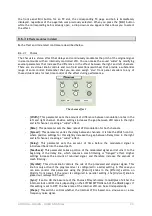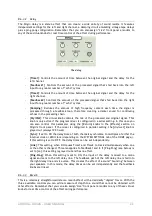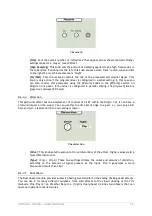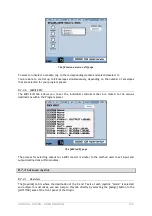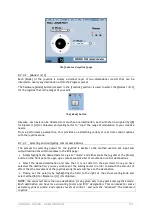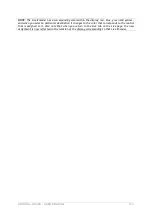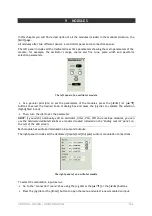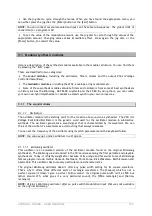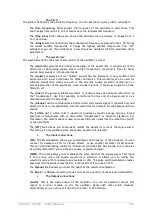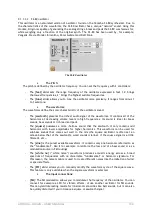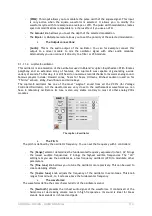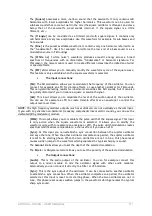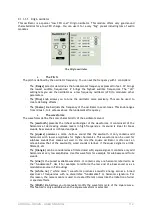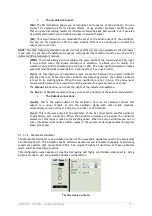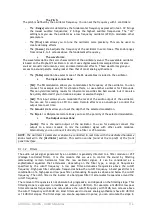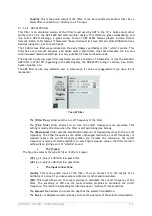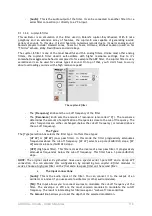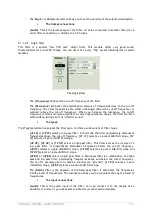
ARTURIA – ORIGIN – USER’S MANUAL
106
The Minimoog oscillator also offers a very unique waveform: the “Asymmetric triangle
”
(called [saw
tri]).This waveform produces a timbre between the triangle and the sawtooth, especially suitable
for smooth lead sounds.
The Minimoog oscillator
•
The pitch:
The pitch defines the oscillator frequency. You can set this frequency with 3 controllers:
-
The [
Range
] selector determines the fundamental frequency expressed in feet. 32’ brings
the lowest audible frequencies; 2’ brings the highest audible frequencies. The “LO”
setting lets you use the oscillator as a low frequency oscillator (LFO) to modulate other
parameters.
-
The [
Fine tune
] knob allows you to tune the oscillator more precisely. This can be used to
create detuning effects.
-
The [
Coarse tune
] knob adjusts the frequency of the oscillator in semi-tones. This knob
ranges from minus 2, to 2 octaves above the fundamental frequency.
•
The waveforms:
The Waveforms define the sonic characteristic of the oscillators sound.
-
The [
sawtooth
] presents the richest audio signal of the waveforms. It contains all of the
harmonics at decreasing volume levels in high frequencies. Its sound is ideal for brass
sounds, bass sounds or rich lead and pads.
-
The [
square
] possesses a more «hollow» sound that the sawtooth. It only contains odd
harmonics with lower amplitudes for higher harmonics. This waveform can be used for
sub-bass sounds that comes out well in the mix (the square oscillator is often set an
octave below that of the sawtooth), wood sounds (clarinet, if the square signal is a little
filtered), etc.
-
The
[Wide rectangle
] is a rectangle waveform which has a pulse width setting at around
35%.
-
The [
Narrow rectangle
] is a rectangle waveform which has a pulse width setting at
around 15%.
-
The “Asymmetric triangle” (called [
saw tri
]) is a specific waveform on the Minimoog. This
waveform produces a timbre between to the triangle and a sawtooth. This waveform is
very usable for smooth and soft lead sounds or basses for example.
-
The [
triangle
] can be considered as a filtered (and soft) square signal. It contains only odd
harmonics at very low amplitudes. Use this waveform for example for sub basses and flute
sounds.
-
The “White noise” waveform ([
white no
]) produces acoustic energy across a broad
spectrum of frequencies with no discernible “fundamental” or harmonic signature. For
this reason, the noise module is used to create different noises like the imitation of wind
or special effects.


